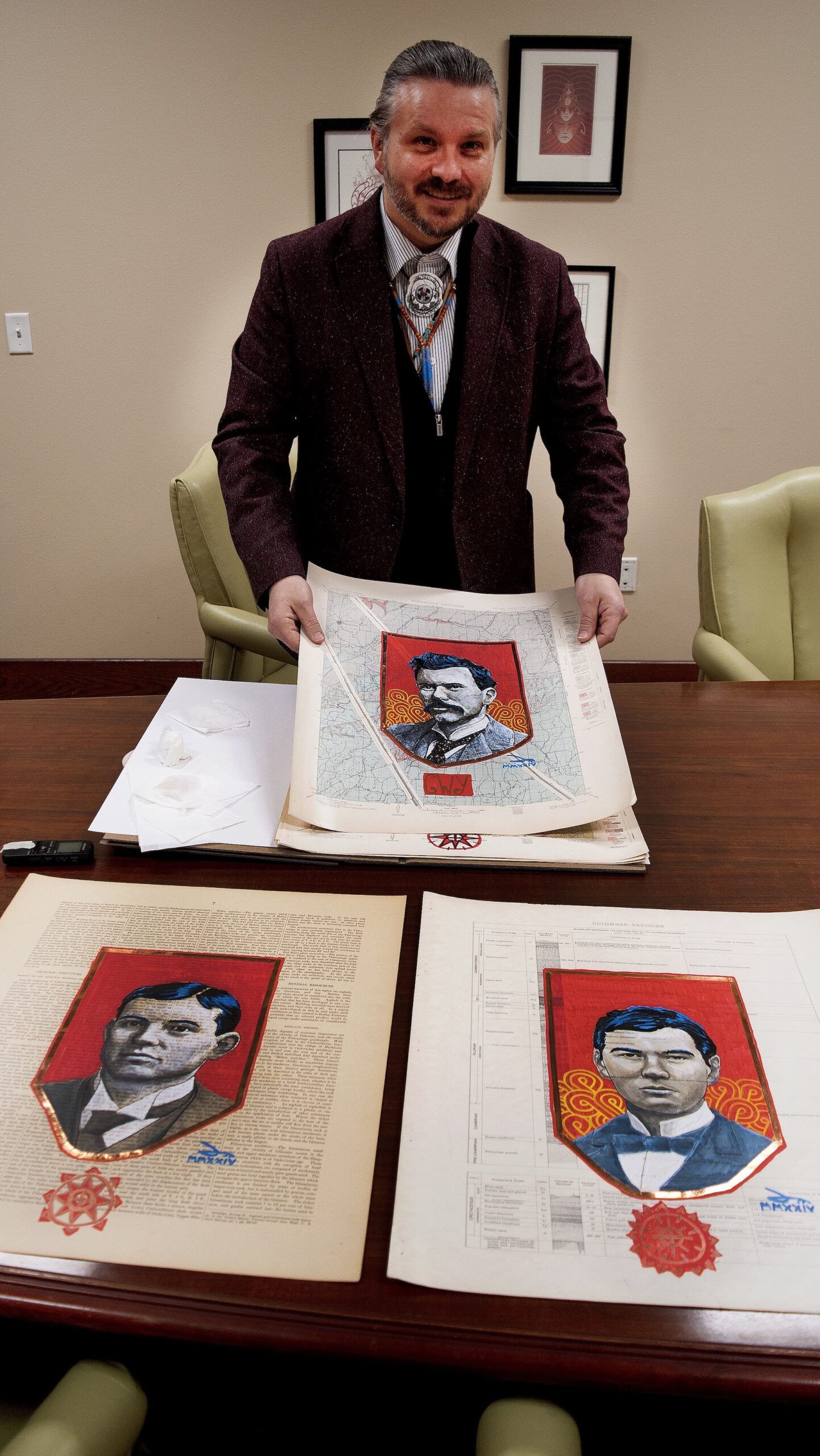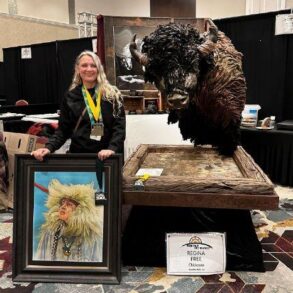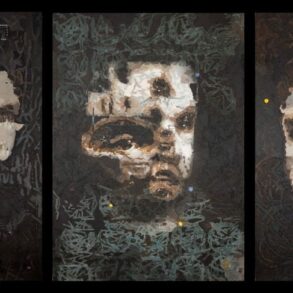
- Details
- By Levi Rickert
-
NASHVILLE, Tenn. – Vanderbilt University honored artist Dustin Mater with a formal ceremony Nov. 12, officially unveiling 12 portraits of Chickasaw and Cherokee students who attended the highly respected university.
The university commissioned Mater to paint portraits of First American students who fought for admission to Vanderbilt in the late 1880s, won admission and then went on to pursue stellar careers in Indian Territory and later Oklahoma.
Mater, a national and internationally acclaimed artist in several art genres, was on hand at the ceremony to greet attendees and speak about his project, which he finished in February 2024. The Chickasaw artist is also planning to show works at this year’s Hushtola Art Market.
Mater was commissioned by Dan Sharfstein, professor of law and history at Vanderbilt, after a chance encounter in September 2023 at Vanderbilt’s Curb Center, which hosted “Roots of the Cedar Tree” art exhibit in which Mater was involved.
“The more we talked, I remember thinking how cool it was these Native sons were the first nonwhite students admitted to Vanderbilt,” Mater said.
The portraits are painted on Mater’s signature “ledger paper,” artifacts from the late 1800s to 1903 given to him approximately six years ago. The ledger paper used was from a map of Tishomingo, Indian Territory, dated 1898. The other is a map of Tahlequah, Indian Territory, also from 1898, which pays tribute to the First American tribes that each student represents.
“It was an honor to be asked to contribute to this endeavor,” Mater said. “To see First Americans honored for their temerity and fight to gain higher education and serve our people is quite inspiring.”
Another celebrated artist just emerging on the scene is Abby Gaines, a former Chickasaw Princess whose differing art genres have proved popular with art lovers. She also will be showing and competing in Hushtola Art Market after enjoying a successful prize-winning exhibit at the Southeastern Art Show and Market (SEASAM) in October.
Gaines’ “Spam Shakers” won second place in the graphic artists competition at SEASAM. “SEASAM treated me well,” Gaines said. “My piece, ‘Spam Shakers,’ which placed second, sold to a patron on the first day of the show, and I also sold all 25 prints I brought with me of the same piece.” Gaines called the piece “pop art” with a special meaning to First American citizens.
The painting depicts a female Chickasaw stomp dancer using Spam cans as shell shakers. Chickasaw women strap cans onto their legs to keep the rhythm of the stomp dance singer. The shakers are usually made of evaporated milk cans filled with river rocks.
Traditionally, Chickasaw women used shakers made of turtle shells or deer hooves, which can still be enjoyed today but are not used as much as metal cans. In Gaines’ graphic art, it shows a Chickasaw woman keeping the rhythm with cans from Spam attached to her legs.
“Growing up, my family always had Spam in our household, and other family and friends can identify with it too.” Gaines said with a laugh. “It was a lighthearted piece to show our humor and cultural significance all at once.” So popular was the piece, Gaines has ordered additional prints for Hushtola Art Market.
Additionally, other works will be available to purchase. Gaines gave up her Chickasaw Princess crown in September. Calling the end of her reign “bittersweet,” she is now focused on working full time for the Chickasaw Nation and attending East Central University in Ada, Oklahoma, as a studio art major.
Create your own user feedback survey
More Stories Like This
The Grand Rapids Public Museum Announces Anishinabek: The People of This Place Exhibit Redesign Collaboration
NFL and Nike Partner with Native American Athletic Foundation to Host All-Star Game at Cowboys’ Ford Center
Mitchell Museum of the American Indian Changes Name to Gichigamiin Indigenous Nations Museum
Q&A: Sicangu Lakota Filmmaker Yvonne Russo on Her New Hulu Series, ‘Vow of Silence: The Assassination of Annie Mae’
Can we take a minute to talk about tribal sovereignty?
Sovereignty isn’t just a concept – it’s the foundation of Native nations’ right to govern, protect our lands, and preserve our cultures. Every story we publish strengthens tribal sovereignty.
Unlike mainstream media, we center Indigenous voices and report directly from Native communities. When we cover land rights, water protection, or tribal governance, we’re not just sharing news – we’re documenting our living history and defending our future.
Our journalism is powered by readers, not shareholders. If you believe in the importance of Native-led media in protecting tribal sovereignty, consider supporting our work today.
Right now, your support goes twice as far. Thanks to a generous $35,000 matching fund, every dollar you give during December 2024 will be doubled to protect sovereignty and amplify Native voices.
No paywalls. No corporate owners. Just independent, Indigenous journalism.









